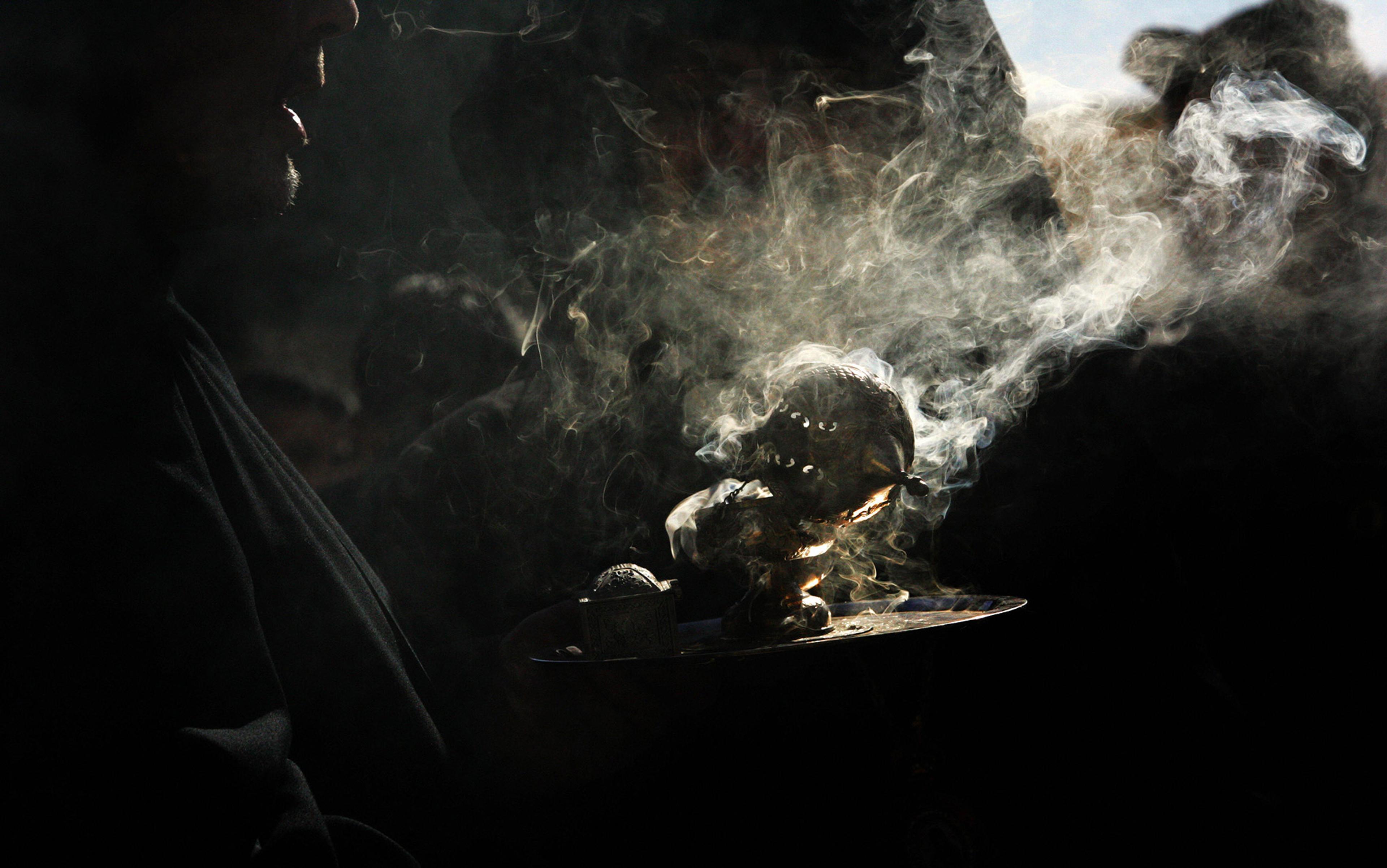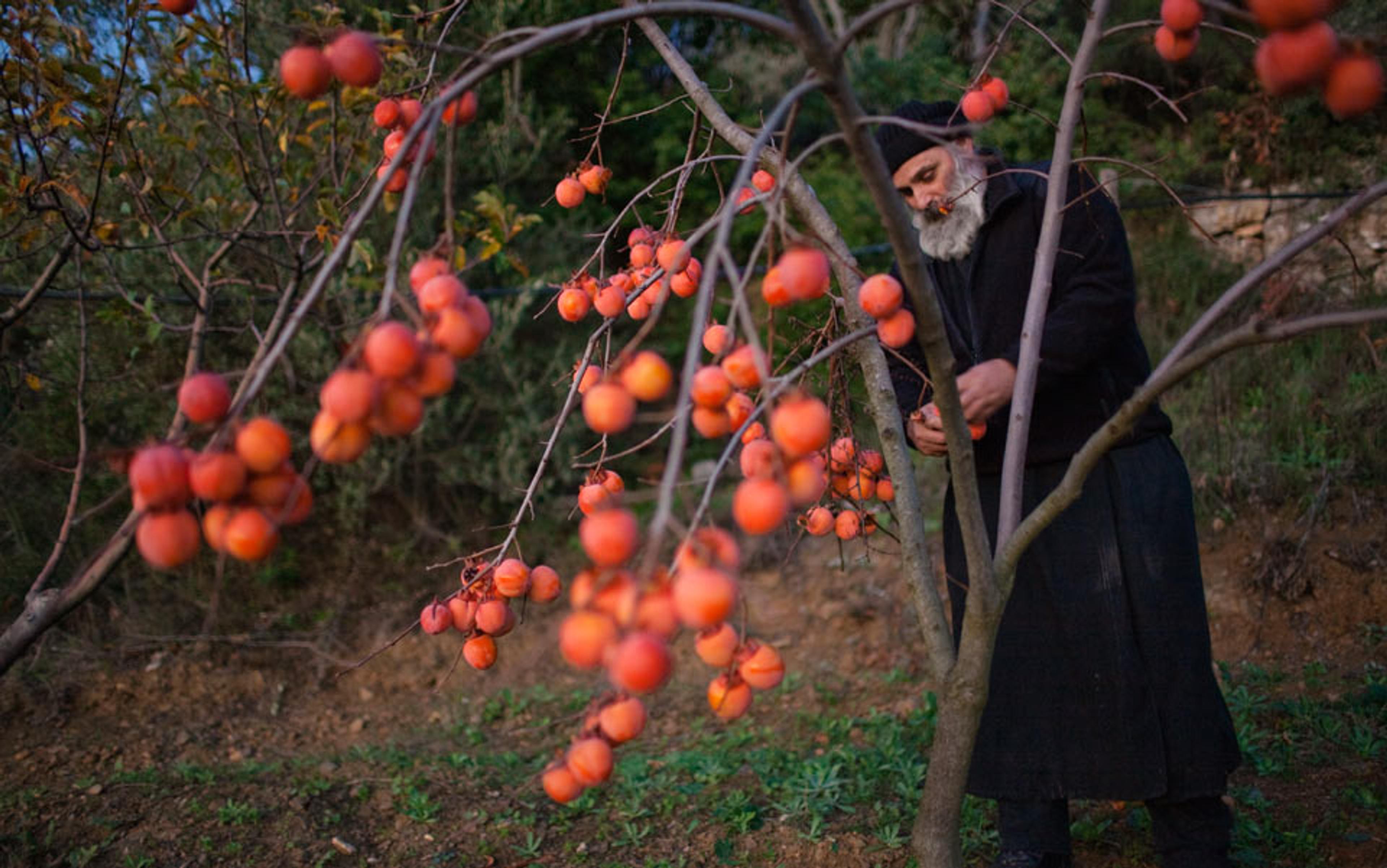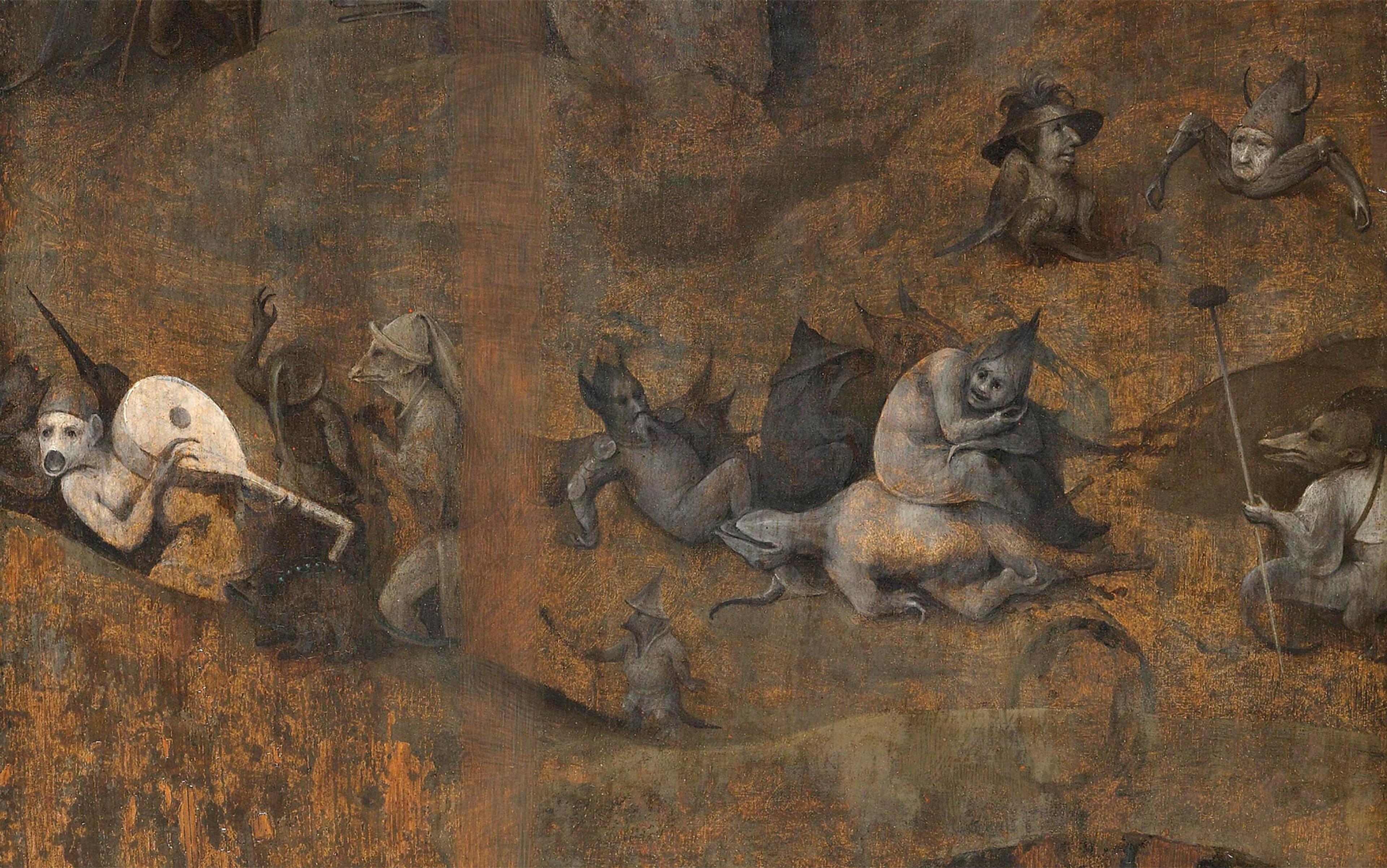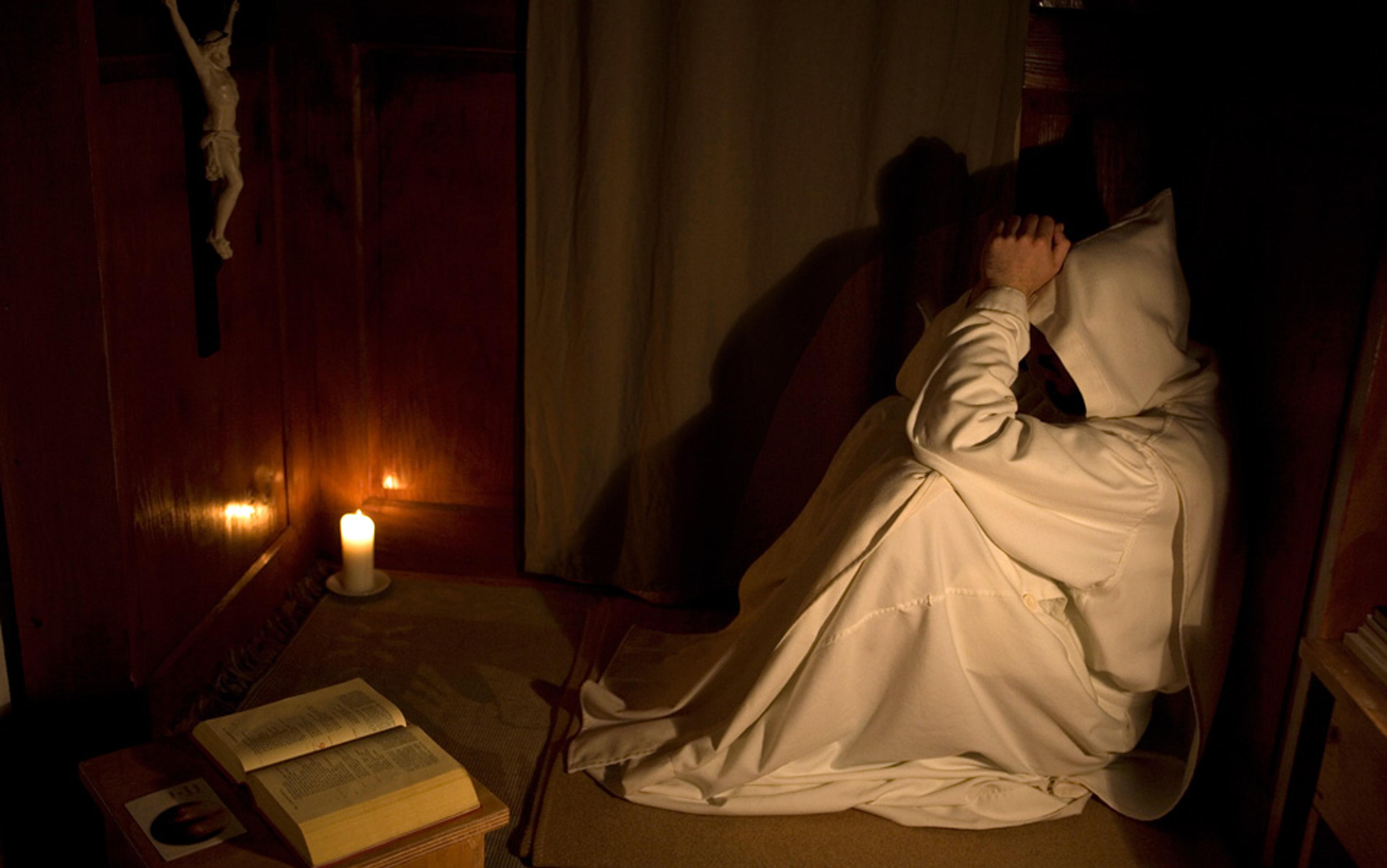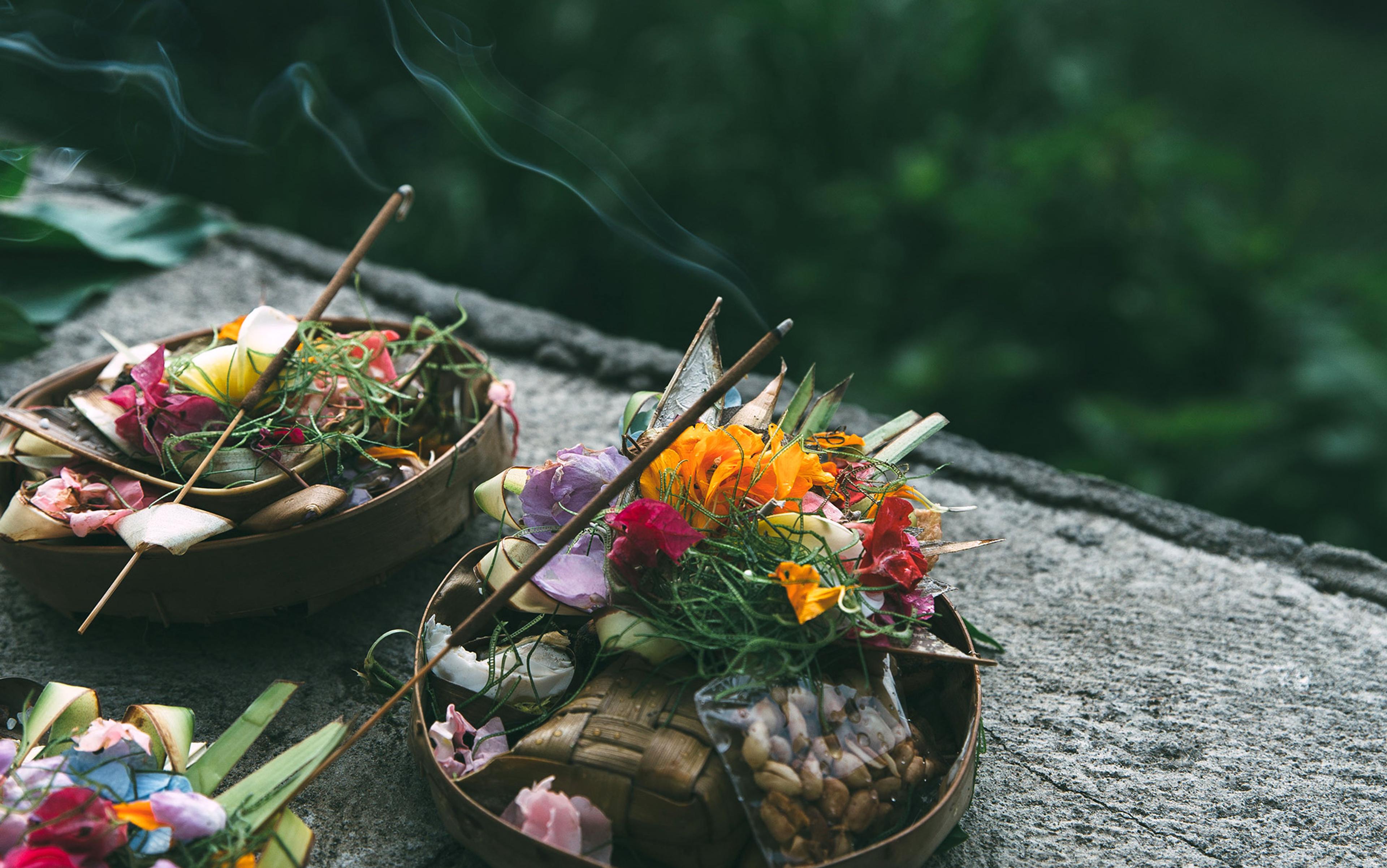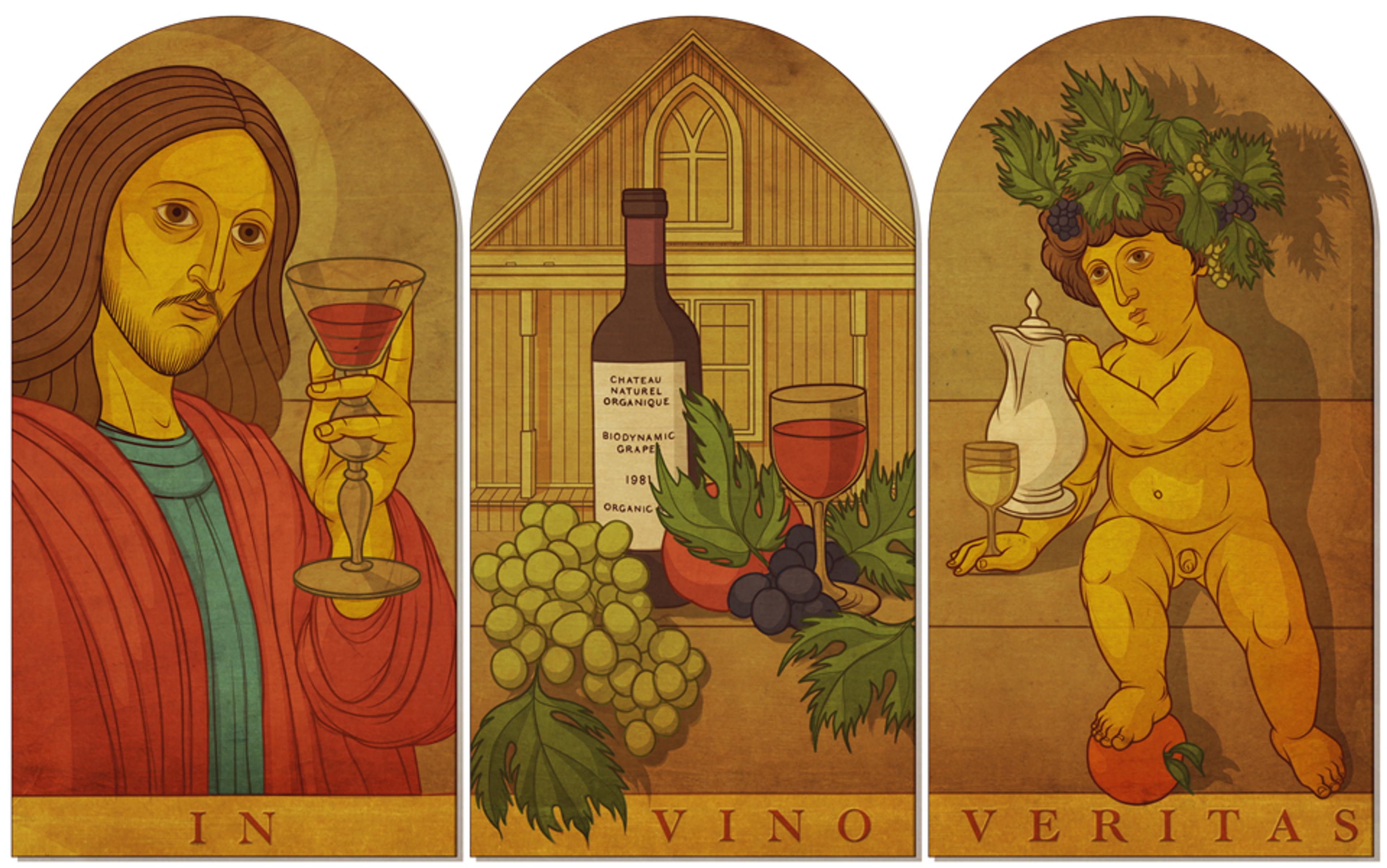In the traditional Christmas narrative, wise men from the East brought gifts of frankincense, myrrh and gold for the infant Christ. Many explanations exist for the choice of these three items. Most centre on the idea that frankincense was for the birth of a divinity, myrrh was for his embalmment after death, and gold was a recognition of his status as king. I find the plant extracts – frankincense and myrrh – to be particularly interesting. How is it that they existed as both medicinal and ritual substances, and endured as such despite the profound shifts in culture and science over the ensuing centuries? What is it about frankincense and myrrh that caught the imagination of early Christians, and how have their material properties – powerfully alluring and at times highly contested – helped to shape religious behaviour?
Even people familiar with the story of the three wise men might struggle to explain the material origins of their gifts. But if Christmas is a story about the ‘Emmanuel’ (literally, ‘God with us’) being born in human, bodily form, then the physicality of the gifts – and their relation to our human body – is of great importance. The resins of both myrrh (Commiphora myrrha) and frankincense (Boswellia sacra) come from the sap of small trees in the Burseraceae family. They grow in arid or semi-arid climates, where soil and weather have considerable impact on the flavour and aroma. Frankincense – ‘frank’, simply denoting high quality incense – has a woody, or warm spiced smell; myrrh smells like rose or even sweet basil, but is sometimes said to have a bitter aroma. Both their smells are wildly variant, however, and myrrh especially – even from the same source – can be said to take on various aromas depending on the mood and spirit of the event. In the ritual practice of Orthodox Christianity, which boasts a continuity of tradition across Eastern Mediterranean regions from the 1st century CE, frankincense is most valued as resin pellets, while myrrh usually comes as an oil infusion.
Mediterranean religion in antiquity was rich with olfaction. This held true for Greco-Roman paganism as well as for Judaism. Everybody used incense and unguents in the home and in public buildings; a wide variety of substances were burned in ritual settings – mostly plants, oils and spices, often imported at great cost from Arabia, Africa and India. At a time when ‘bad air’ was believed to be a cause of disease, perfumes and incense were used to cleanse the air both as prescribed medicine and as a preventative health measure. Aromatics purified the air against disease, and were understood to drive away vermin such as mice and snakes.
The Ancient Greek physician Pedanius Dioscorides (c40-90 CE) wrote extensively of the medicinal qualities of myrrh and frankincense. In his five-volume De Materia Medica, he says that myrrh is:
warming, rheum-closing, sleep-inducing, retaining, drying and astringent. It soothes and opens the closed vulva, and it expels the menstrual flow … Rubbed on with the flesh of a snail it cures broken ears and exposed bones, as well as pus in the ears and their inflammation with meconium, castorium and glaucium. It is rubbed on varicose veins with cassia and honey.
Frankincense, Dioscorides continues, is ‘warm’ and ‘astringent’. No less miraculous as a cure-all, he lists its specific uses at length, including its capacity to ‘fill up the hollowness of ulcers and draw them to a scar, and to glue together bloody wounds’. Today, research in the biochemical sciences shows that myrrh works as an antibacterial agent, which might explain its historical use for treating various infections. Frankincense, for its part, has been shown to affect some strains of human cancer cells, as well as to open the neural pathways in mice that stimulate the perception of warmth.
In the Roman Empire, the medical benefits of frankincense meant that, in many cases, it was not clear if the burning of incense was for ritual or medicinal purposes. In fact, these were not mutually exclusive categories as they might seem today. Frankincense was commonly burned in tombs, catacombs and at wakes, just as it was burned before idols and in the temple grounds.
In this context of pervasive olfaction in medical, public and ritual spaces, the first generations of Christians struggled to articulate their difference. Patristic authors – that is, authors writing in the early Christian theological tradition – such as Justin Martyr (c100-160 CE) argued against sacrificial offerings, saying that God ‘has no need of streams of blood, libations, and incense’. He emphasised that the sacrificial economy of Christianity was distinct from that of both the pagans and the Jews. Athenagoras (c133-190 CE) went so far as to say of God that ‘He is Himself perfect fragrance’, and thus does not need perfume sacrifices.
A major factor in this adamant rejection of ritualistic incense was that the Roman imperial religion required its subjects to make sacrifices to the gods and the genius of Rome. While animal sacrifices were the norm, incense (such as frankincense) was the minimal obligation of allegiance. This came to a head in the Latin-speaking Church in North Africa following the edict of Emperor Decius (c200-250 CE), when some Christians gave in and made sacrifices, some went into hiding, and some accepted martyrdom. The issue became particularly heated in Carthage, where a problem presented itself regarding what to do with those apostates who had betrayed the Church through sacrifice (the sacrificati) or via burning incense (turificati). While the church reasoned that turificati could be received back into the Christian community in their lifetimes, the sacrificati were accepted only on their death-bed. For long after, the Latin-speaking church maintained a strong aversion to anything that looked like the very same pagan practices that the turificati had performed in their denial of Christ.
Those who witnessed the martyr’s death attested to the ‘delightful fragrance’
Evens so, the links between fragrance and the sacred did not break. The imagery of incense and sacrifice can be seen throughout early Christianity, especially in the Greek and Syriac-speaking regions of the eastern Mediterranean. Take, for example, the account of the martyrdom of Polycarp of Smyrna (modern-day Izmir in Turkey). In 155 CE, after he refused to make a sacrifice to the Roman gods and swear an oath to the greatness of Caesar, he was condemned to be burned at the stake. Those who witnessed his death attested to the ‘delightful fragrance’ they perceived during the burning of his flesh, ‘as if frankincense or some such precious spices had been smoking [literally, ‘breathing’] there’. This olfactory scene of the martyrdom, where the authors attest to the scent of frankincense, starts a long and ornate tradition of the smell of frankincense and/or myrrh being present at a martyrdom or at the discovery of relics.
Many early Christian authors interpreted scriptural references to incense in an allegorical manner, as the prayers of the faithful, and emphasised the purity of devotion over the ritual use of scent. In 387 CE, John Chrysostom was a Greek-speaking priest in the city of Antioch (modern-day Turkey), who offered an interpretation of Cain’s sacrifice of incense and Noah’s animal sacrifice. While incense is usually sweet, and the burning flesh of animals (hair and all) a wretched stench, Chrysostom argues that ‘God attends to the intention’ of the sacrifice. As such, Noah’s burned animals smelled ‘sweet’, while Cain’s incense was ‘an abomination’. The inversion of stench and sweet savour is instructive in the moralising manner typical of John Chrysostom.
By this time, in the late-fourth century, the condemnation of incense comes not from its uselessness before God, as it was with Justin and Athenagoras, but from the manner of its offering. The shift coincides with the legalisation of Christianity by the Emperor Constantine (in 313 CE), and the subsequent establishment of Christianity as the official religion of the empire under Theodosius (in 380 CE). This is when the prejudice against the ritual use of incense begins to subside. It is true that controversies arose later among European Christians about the use of ‘smells and bells’, especially during the Reformation – but the continuity in the ritual use of frankincense and myrrh in Orthodox Christianity has been fairly consistent since this time.
The hymnographer Ephrem the Syrian (306-373 CE), whose songs are still sung in Orthodox churches today, is a major influence in such continuity. He lived during the period in which Christianity was legalised, and having never experienced the negative association between incense and paganism, filled his writing with rich metaphor and theological implication. Ephrem follows the older tradition that sees God as pure fragrance, and calls Christ the ‘Fragrance of Life’, but he develops this metaphor in terms of how the material substance of the incense and perfume entangle the body, permeate it, and become united to and within it. Ephrem also builds on the medical associations of the resins, and speaks of how incense – offered as prayer – is able to purify the soul. Christ, as perfume, permeates the body and soul; even as the breath of life animated the lifeless body of Adam in Genesis, so too did the inhalation of the fragrance of Christ bring life and regeneration into the Christian.
When Christ was buried, Mary Magdalene and the other women used myrrh to prepare his body for burial. As such, myrrh has always held a very special place in Christian literature and liturgical practice. What is called holy myrrh, or sometimes myron or muron, is still fundamental to the initiation of new Orthodox Christians, as well as the consecration of bishops and the enthronement of emperors. Myron in this ritual context is not Commiphora myrrha alone, however; over the years, the recipe has become more complex, such that contemporary Greek practice uses 57 aromatic botanicals.
In the making of each new batch of myron, the remainder of the previous batch is mixed in. This provides material continuity between the myron used today to anoint the newly baptised, and the myron used in previous centuries. Converts are often told that not only is this the same liturgical act – that is, the ritual words of blessing and induction – but that the oil used on their forehead, eyes, nose, mouth, ears, chest, hands and feet can contain molecules of oil from previous millennia. There is a physical link and bodily participation in the same substance.
In the Greek historical record, this practice of adding the old myron to the new batch is traced back to St Athanasius the Great of Alexandria in the 4th century CE. In the historical records of the Coptic Orthodox Church of Egypt, St Athanasius is recognised not as the source of this tradition, but for the standardisation of this practice. According to Coptic historians, after the resurrection of Christ, while the apostles met in the house of St Mark, they gathered the spices used by Mary Magdalene and the other women, and brewed the original holy myron, so that each could take with them a jug of oil containing the material substance of Christ’s burial.
The symbolic act of anointing is performed on the parts of the body associated with sensory perception
Continuity with the body of Christ helps to make sense of the early Christian writings about myron. For example, Cyril of Jerusalem (c313-386 CE), in his instructions given to those awaiting initiation into the Church, says:
Beware of imagining that this is ordinary ointment. For just as after the invocation of the Holy Spirit the bread of the Eucharist is no longer ordinary bread but the body of Christ, so too with the invocation this holy muron is no longer ordinary or, so to say, common ointment, but Christ’s grace which imparts to us his own divinity through the presence of the Holy Spirit. To symbolise this truth you are anointed on your forehead and on your other senses. Your body is anointed with visible muron, while your soul is sanctified by the life-giving Spirit.
The holy myron is ‘Christ’s grace’. The ritual practice of anointing is symbolic, but the myron is consubstantial: being two different substances at the same time. Importantly, the symbolic act of anointing is also performed on the parts of the body associated with sensory perception.
The other thing we see in Cyril’s meditation on myron is the dual nature of the scented oil. A distinction is made – just as it was for Ephrem – between the fragrance and the resin itself. For its part, incense was understood as a human offering given to God. Oil was a protective substance, given by the divine to mankind for their wellbeing – both health and safety. The fragrance in both the oil and the smoke, however, was divine. The scent of God thus became somatic evidence of God’s presence.
This interplay of substances and odours became a model for understanding human-divine interaction, and offers insight into how the early Christian understanding of materials worked. First, more important than the words of the ritual, or even the actions, is the actual myron itself. Secondly, the myrrh is seen to be both oil and fragrance. Each of these properties offer a specific affordance for the worshipper in terms of the penetration of Christ and the preparation for the athleticism of spiritual combat.
It would be easy to say ‘myrrh and frankincense are symbols’, and leave it at that: a quaint byproduct of the religious imagination. However, I think that this short-changes their significance. Yes, human cultures find symbols compelling, but why? What is it about incense and oil that is so suggestive of both purity and health?
Early Christian writers, as well as contemporary Orthodox Christians, emphasise how the person’s soul and body interact, and also how each is affected by external things and situations around them. The purity of the soul is affected by the conduct of the body, and the wellbeing of the body is affected by the state of the soul. So, too, are things external to the body able to help or harm the wellbeing – and sanctity – of the soul and body. There is something about substances such as incense and oil, I would suggest, that allow them to be the means of ritual healing.
Their capacity as a visual, tactile and olfactory substance is ripe for sensorial intimacy with the body
It’s important to note that the burning of incense is a transformation, not an act of destruction. Burning is a form of re-mediation: turning the agent from one substance (or media) into another. The medicinal qualities are still there, but the transformation also allows new aspects of the substance to become apparent. In Christian settings, the rising smoke can become the visible aspect of a much larger practice of worship; the purified smoke travels heavenward as prayer, while the perfume is the sensorial evidence of divine presence. In the Orthodox Christian temple – specifically designed to bring light pouring in from its uppermost dome – the incense catches the light and makes it visible in a startling and new way. Light, as a recurrent image of Christ and divine presence, is made visible via the breathing incense. As a transformative act, the ignition of frankincense brings it to life, activating its latent potential and letting it ‘breathe’.
In examining the medical substances used within Orthodox ritual worship, we see that the affordances – both physical and spiritual – of the materia medica shape and transform Orthodox conceptions of health and worship because of their material properties. As the materials are joined to and absorbed within the physical being of the human person, the possibility of ‘Emmanuel’ is felt in the skin and smelt in the air.
Ultimately, the ritual use of frankincense and myrrh does not rely on the material capacity of the oil or resin alone. Rather, it builds on the complementary affordances of the pungent oil to both penetrate the depths of the body via its fragrance, and permeate the envelope of the body via its moisture absorbed into the skin.
Myrrh and frankincense, transferred into oil and smoke, have a rich and complex materiality. The way they interact with light – either in the shimmering gloss of oil or in the undulating interplay of smoke – means that their capacity as a visual, tactile and olfactory substance is ripe for sensorial intimacy with the body. The sensation of myrrh and frankincense upon – and dissipating into – the body allows for the movement of blessings, health and general wellbeing from Christ into the Christian. As Cyril said, the myron is ‘Christ’s grace’ imparted to the new Christian; and as Ephrem taught, the aroma of the frankincense offered in prayer is the presence of Christ filling the lungs of the faithful.
